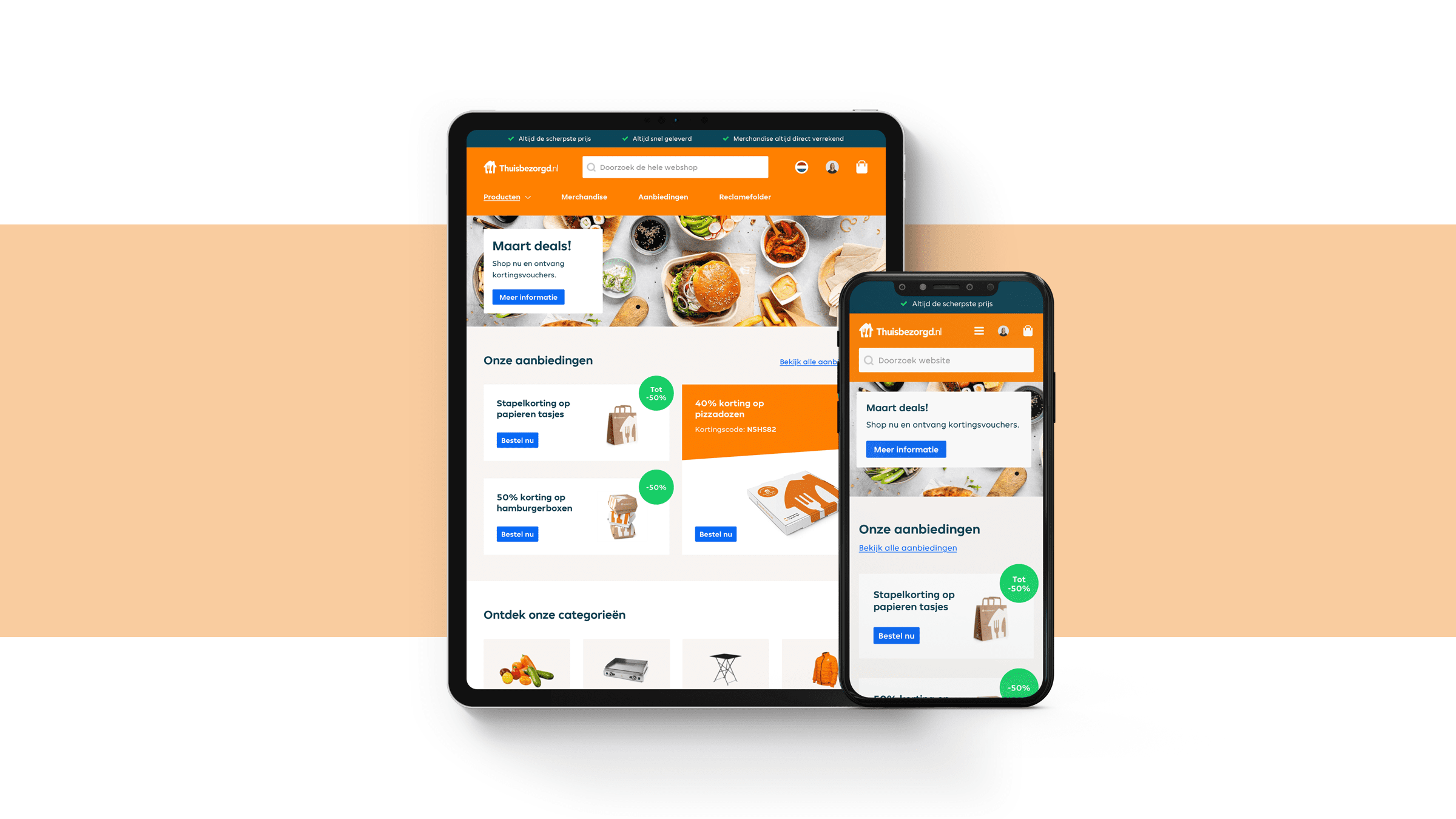The B2B marketplace boom is just beginning. A new study projects B2B marketplaces will account for 30% of all global online B2B sales by 2024; estimated to reach $3.6 trillion up from $680 billion in 2018. There are two core pillars contributing to the surge of marketplace selling: marketplace syndication and marketplace creation.
How marketplaces fit into the B2B buying journey
Most B2B purchases involve a chain of decision-makers and follow a complex, nonlinear path where the readiness of digital information is appreciated. The buying journey may be difficult to map, but the initial step is clear: an overwhelming majority (89%) of B2B customers begin their process with a search engine and conduct at least 12 searches prior to engaging on a specific brand’s site.
Marketplaces have become a key avenue for vendors to research their options and connect with multiple brands and products at once. “Opening up the business to comparison is one of the biggest push backs from B2B sellers when it comes to marketplaces, but we’re way past the era where a comparison is restricted,” said Jonathan Whiteside, Principal Technology Consultant at DEPT®. “Even before marketplaces, your customers were accessing multiple supplier websites across monitors and devices to create their own comparisons. By participating in the process, rather than resisting, you’re making it easier for them. When it comes to customer experience, you have to give an inch to get their attention and prove value.”
A customer previously unknown to your brand may now be discovering your products. “If a builder is looking for a home appliance, they’re searching for options that match specific criteria, whether that’s related to size or energy consumption, they’re able to easily compare a Bosch product vs a Samsung vs models from a new manufacturer. Being considered alongside premium vendors adds credibility and gives your brand a chance to win new business. Use marketplaces as an inbound channel.”
A new channel for lead generation
The main advantage for B2B sellers joining marketplaces is their ability to reach a large, captivated audience. Marketplaces have teams dedicated to keeping up with trends and search strategies, refreshing pages regularly and optimising content. When combined with the range of brands updating offers and adding or removing products, SEO gets driven up which leads to more inbound traffic.
B2B often focuses on business retention rather than acquisition. Investing heavily in developing consumer loyalty is a great growth strategy. Despite B2Bs having a lower number of customers compared to B2C businesses, the transaction value is much higher, as customers are likely to order in bulk and are often tied into long term contracts and subscriptions. “Marketplaces are actively pursuing new customers, let them supplement your marketing strategy by directing prospects to your dedicated platform. Follow the funnel from search to discovery, continuing the message by clearly communicating your unique proposition and focusing on engagement.”
Whiteside added: “Becoming an expert advisor is one way for businesses to stand out from their competitors in the marketplace. Hone your digital engagement skills and provide support around your products and insight into the industry you operate in. Marketplaces may be leading the way for convenience, but B2B specialists run on trust and long-term relationships; don’t miss the chance to create a lasting business partnership that’s mutually beneficial.”
Selling in tandem with marketplaces
When 66% of distributors and 53% of manufacturers say they are losing revenue to marketplaces, it’s time to work with these commerce leaders. Pinpoint how their strengths in fulfilment, standardised delivery, immediate visibility and compliance can help maximise your overall sales and distribution strategy. As a manufacturer, the opportunities are fairly straightforward to optimise warehouse space: combine several low margin products into a high margin bundle and offload slow-moving inventory, surplus or overstock items, as well as discontinued product ranges.
It’s a lot more complicated for distributors since a lot of their value is tied to their ability to fulfil orders in a unique way that often involves their own delivery fleet. “If you’re sending a big pipe for a water supply company, you know how to deliver that product in a special way, so keep that on your delivery system, but maybe let go of the nuts and bolts that fit into standard boxes. The brand awareness benefits and efficiencies of the marketplaces are worth it if you’re sending standard items. Work with them sometimes, but preserve your value.”
Mapping the B2B marketplace landscape
Alibaba and Amazon are the world’s largest B2B online selling platforms. Both companies are making significant progress, with Amazon Business hitting $25 billion in annual sales and growing 1.6 times faster than Amazon itself last year. The Chinese tech giant Alibaba managed to gather 10 million B2B buyers on its platform from 190 countries. And is now outpacing Amazon, Google Cloud and Microsoft with a 60% year-on-year rise in revenue in the third quarter of 2020.
More than 80% of the 600 business buyers Episerver surveyed said they use these two platforms to start their research. These B2B marketplaces have been celebrated for creating alike B2C experiences and simplifying corporate purchasing. Their success has opened the floodgates. There are now over 300 B2B marketplaces in Europe, up from a mere 20 back in 2010. The majority of these marketplaces were started within the last five years, and Forrester Research predicts that hundreds of new B2B marketplaces will continue to launch in industries as diverse as chemicals, machinery, electronics, agrifood and aerospace.
“B2B marketplaces are still very much in their infancy, and there are a lot of opportunities for advancement through tech innovation and customer activation,” Whiteside commented. “The evolution of B2B marketplaces will more be more focused, offering less commoditised, more unique goods or services sourced for a particular industry. These marketplaces will have more complex workflows and may be tougher to set up as opposed to traditional marketplaces due to their inherent complexity though, for this reason, they will also be more defensible.”
Opportunities for marketplace creation
The demand for niche B2B marketplaces keeps growing, providing fertile ground for marketplace giants to specialise in verticals, industry leaders to create multi-vendor e-commerce platforms, or venture capital-funded digital native start-ups to swoop in. The more sector-specific and tightly seller-focused emergent marketplaces are, the more targeted traffic they’re likely to generate and successful they’ll become.
According to Whiteside: “If you’re already a leading manufacturer or distributor in a particular area such as bus parts or chemical components, launching a vertical-specific marketplace is a logical next step to reaffirm your market position, open up new revenue streams and attract serious buyers. Having a well-established company domain will boost the launch, while your industry knowledge will ensure satisfaction and longevity; simplifying the buyer journey and creating new sales opportunities for sellers tailored to the unique needs of their sector.”
Follow in the footsteps of vertical leaders who have established their own B2B marketplaces. In aviation and aerospace Airbus, Thales and Honeywell; Siemens in trains; Toyota Material Handling in forklifts; CheMondis for chemicals; Conrad in electronics; HP Enterprise for IT supplies; and Tetra Pak for food and beverage.
Just Eat launches a B2B marketplace
Following the merger between Just Eat and Takeaway.com in spring 2020, Just Eat Takeaway transformed into a global platform that operates in eleven countries, serving over fourteen million customers annually. The company decided to accelerate its digital transformation and partnered with DEPT® to launch a new, innovative B2B marketplace that caters to the needs of restaurateurs by leveraging the wealth of data the company has at its disposal.






